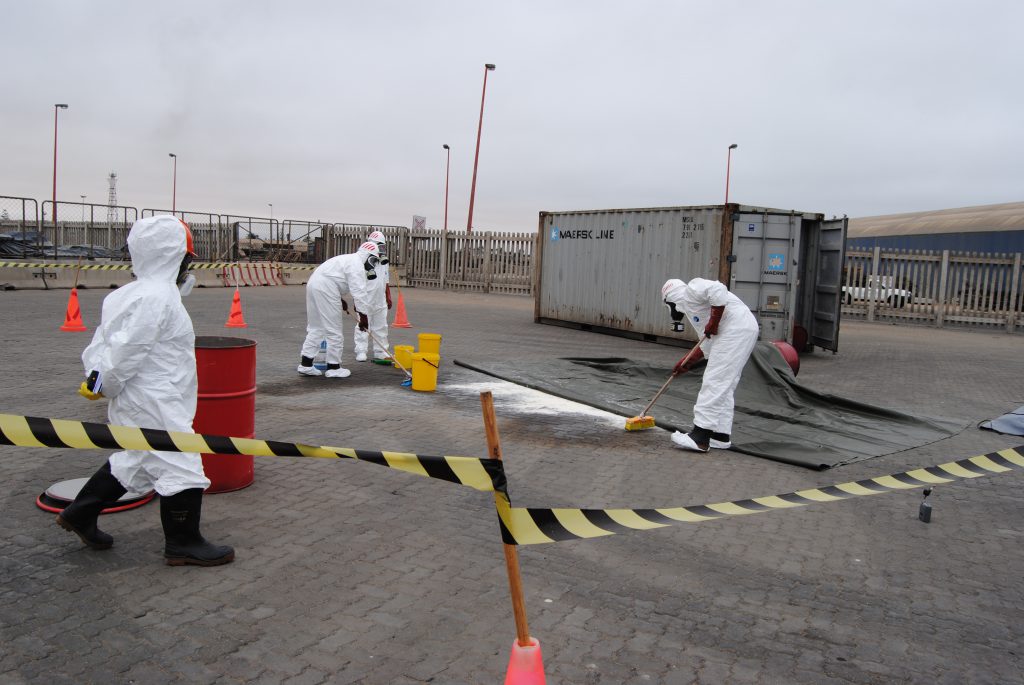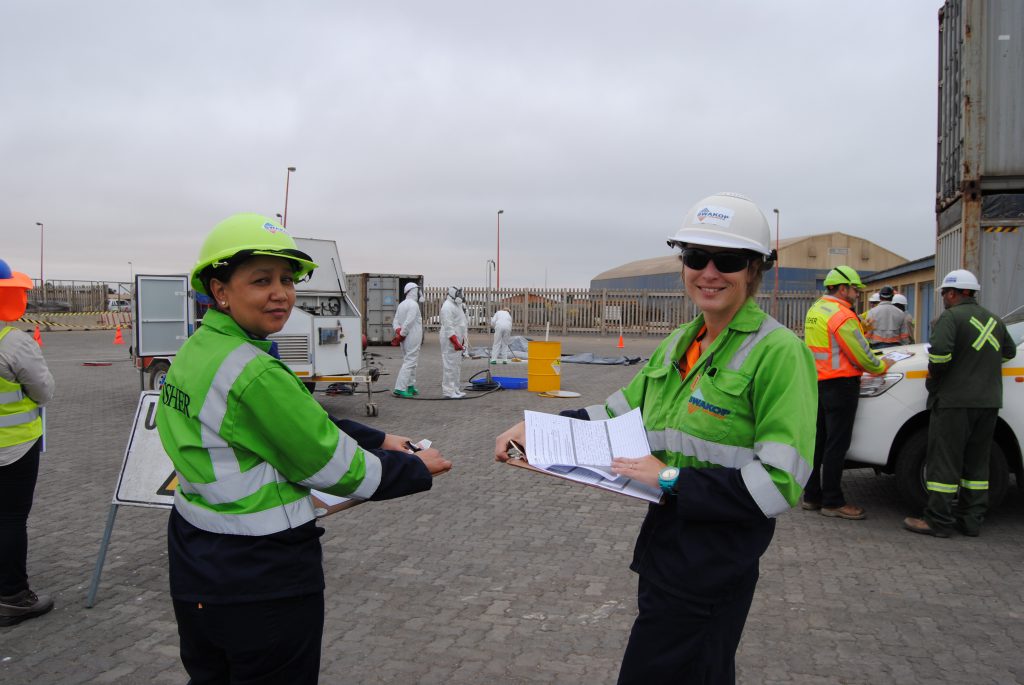On 27 February 2020, under the auspices of the Radiation Safety Working Group of the Namibian Uranium Association’s Uranium Institute, the Security and Emergency Services Departments of Rӧssing Uranium, Swakop Uranium, and Namport conducted a joint emergency drill inside the harbour of Walvis Bay. The drill was observed by SHEQ staff of the three companies, as well as staff members of Langer Heinrich Uranium, Orano, Reptile Mineral Resources and Exploration, Bannerman Resources, Wesbank Transport, and the Namibian Uranium Institute. Officials from the National Radiation Protection Authority of the Ministry of Health and Social Services also joined as observers.
The players in the Namibian uranium sector have cooperated for a long time when it comes to accident responses, and this drill was undertaken in order to simulate a serious accident, observe the response and learn from it, as well as making sure that the relevant staff members are well versed in the routines required.
The scenario was roleplayed as follows. A reach stacker lifted a container filled with drums containing uranium oxide. The container dislodged, causing it to fall from a height of 6 meters. In the process, the container door broke open on impact, and two drums of uranium oxide rolled out of the container and lost their lids. This resulted in the spill of uranium oxide in the area.

Uranium oxide is collected in buckets after the drum and spilled material is covered with a sheet, to prevent the material being blown by the wind. 
The spilled uranium oxide is recovered and transferred into a drum. 
Observers completing their reporting sheets, documenting the decontamination process and spill clean-up taking place in the background.
The drill was staged in order to demonstrate the emergency response capabilities and level of efficiency as per the relevant emergency procedures of Swakop Uranium, Rössing Uranium and Namport. The major focus points were the actions of the Emergency Unit of Namport, the actions of Swakop Uranium and Rössing Uranium Radiation Officers, Security Officers, supply chain persons, and the Support & Recovery Services. The drill also offered an opportunity to identify improved controls where applicable.
After the drill, all participants and observers gathered at the Namport Offices for a de-briefing session. Issues under scrutiny were communication of the Namport Emergency Control Room, response times of the mines’ emergency services, condition, availability and deployment of emergency equipment and resources, demarcation of the scene, evacuation and crowd control, and site command. While areas with room for improvement were identified, the overall running of the drill was regarded as very satisfactory by all parties involved.
This emergency drill was yet another very valuable exercise, and everybody participating gained knowledge and new experiences, at the same time rehearsing routines. Doing a joint emergency drill allows for peer review, and therefore improves procedures and individual knowledge by allowing participants to learn from each other and subsequently discuss and agree on best practises. The involvement of Namport as a major stakeholder in the transport of Namibian uranium also added enormous value to the exercise.
Contributed by the Namibian Uranium Association
